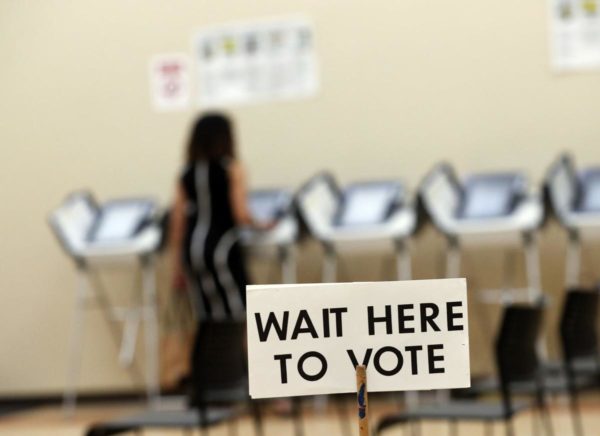As strange as it seems today, there was a time when the decennial United States Census was not a political battlefield. Opposing forces did not regularly battle in court over the addition of questions of citizenship.
In case you have forgotten the lesson from your junior high school civics class, 2020 Census numbers will affect the number of congressional seats and Electoral College votes allotted to each state. (For the upcoming presidential election, the 2010 Census allotted Wisconsin 10 electoral votes — the total number of U.S. senators and House members.)
Congressional districts aside, data and granular information derived from next year’s count will affect our everyday lives in many ways.
Wisconsin and its counties, towns, cities and villages will rely on new census information to plan — as well as allocate funds for — construction of schools, new roads and bridges, libraries, highway safety and public transportation systems. Decisions on where to locate police and fire department facilities that affect our well-being are also driven by census data.
Many nonprofit and community service organizations use the census to estimate the number of potential volunteers in communities across the nation. Hyperlocal data also assist these groups in grant applications and programming. Many 911 emergency response systems are based on maps developed from census numbers.
Census information gives health providers tools to predict the spread of diseases among children or elderly people in their communities. When disasters hit, whether they are natural or man-made, the census informs responders how many people will need their help.
The census will also determine how an estimated $880 billion a year in federal funding will be distributed for public services, like schools and roads.
Driven by census numbers
Kenosha County Human Services Director John Jansen explained that an accurate census count helps provide the county with the funding it needs to provide important services.
“This helps us ensure our elderly are well cared for, our veterans receive the benefits they deserve, and our population health needs are accurately assessed,” Jansen said. “It also helps to make sure we have adequate funding to assist people with job training and opportunities to find employment.”
“We need to count everybody,” said Kenosha County Executive Jim Kreuser, regarding the 2020 Census. “State and federal funds are dependent upon population and the different census tracts that are created.
“Not counting everybody in Kenosha County will be leaving money on the table at the state and federal level.”
The count before the count
While the actual counting of the 2020 Census takes place next year, preliminary counts got underway in mid-August with address canvassing, the first major field operation of the 2020 count.
Address canvassing improves and refines the Census Bureau’s address list of households nationwide, which is necessary to deliver invitations to participate in the census. The address list plays a vital role in ensuring a complete and accurate count of everyone living in the United States.
“The Census Bureau is dedicated to ensuring that we are on track and ready to accomplish the mission of the 2020 Census,” said Census Bureau Director Steven Dillingham.
“We have made many improvements and innovations over the past decade, including better technologies for canvassing neighborhoods and developing complete and updated address listings and maps.”
The Census Bureau has created new software called the Block Assessment, Research and Classification Application (BARCA). It compares satellite images of the United States over time, allowing Census Bureau employees to spot new housing, changes in existing homes and other housing units that did not previously exist.
Reviewers also use BARCA to compare the number of housing units in current imagery with the number of addresses on file for each block.
“We were able to verify 65 percent of addresses using satellite imagery — a massive accomplishment for us,” said Census Bureau Geography Division Chief Deirdre Bishop during a recent briefing.
“In 2010 we had to hire 150,000 people to verify 100 percent of the addresses in the field; this decade we will only have to hire about 40,000 employees around the nation to verify the remaining 35 percent of addresses.”
Census Bureau employees have started walking through neighborhoods across the country checking addresses not verified using BARCA software. In-field address canvassing will continue through mid-October.
An online tool (In-field Address Canvassing Viewer) suggests that a number of Kenosha County households will be visited for updates in the weeks ahead.
To help identify address, listers will have badges and briefcases indicating their affiliation with the Census Bureau. They will knock on doors and ask a few simple questions to verify the address and any additional living quarters on the property for inclusion in the census.
Employees will introduce themselves as a Census Bureau employee, show their official government ID badge and explain the purpose of the visit. People may also ask them for a picture ID from another source to confirm their identity.
Jefferson got it started
Thomas Jefferson directed the first census in 1790. As required by the U.S. Constitution, a census has been taken every 10 years since.
In 1840, the Census Act authorized the establishment of a centralized Census Office. In 1902, the Census Office became a permanent organization within the Department of Interior. A year later, it was renamed the Bureau of the Census and moved to the new Department of Commerce and Labor.
Since that very first census in 1790, the Census Bureau has produced a count of every person living in the United States and its territories every 10 years.
In the beginning it happened by literally walking (or riding on horseback) each road and every single block in the country. In 2010, that was a bit more than 11 million blocks — or approximately 67 million miles traveled.
A lot less shoe leather will be expended for the 2020 count. The Census Bureau Master Address File provides the correct addresses for mailing census questionnaires. That enables the bureau to track homes that may require a follow-up visit by a census taker to help occupants complete the form.
All of the nation’s 11,155,486 blocks have already been reviewed, the Census Bureau noted in preparation for the coming count.
Geospatial technology has improved or corrected 75 million addresses, and 5.3 million new addresses have been added over the last decade, according to the 2020 Census Program Management Review.
SIMMONS BLOCK PARTY

Simmons Island Block Party
Noah Muniz, 5, gets help from his grandfather, Chuck LeMay, while checking out a 1972 Hornet Wagon in front of the Kenosha History Center during the Simmons Summer Kickoff Block Party on Saturday. The event, shortened by rain, featured American Motor Co. and other classic cars as well as food vendors.
Harris and Hudson with Matt

Dan Harris shares his love of classic cars with his son, Matt; seen here examining the engine of a Hudson.
CAR SHOW BAKER PARK

Smart dog: Bowie, owned by James Bradmon, takes advantage of the shade underneath a classic car to escape the heat during the Father’s Day Kenosha Car Show, hosted by Vintage Auto Group and Kenosha Classic Street Machines, at Baker Park on Sunday, June 17, 2018.
KENOSHA NEWS PHOTO BY BRIAN PASSINO
CAR SHOW BAKER PARK

‘I like it hot, like today,” said Manuel Palos, Sr., left, as he and his son Manuel Palos, Jr., right, viewed a 1969 Dodge Super Bee. “It’s good to spend time with dad in the morning,” said Palos, Jr. The pair were at the Father’s Day Kenosha Car Show, hosted by Vintage Auto Group and Kenosha Classic Street Machines, at Baker Park on Sunday, June 17, 2018.
KENOSHA NEWS PHOTO BY BRIAN PASSINO
CAR SHOW BAKER PARK

You can’t go wrong (especially in Kenosha) taking your dad to the Father’s Day Car Show in Baker Park, where you’ll see classic cars like this 1959 Edsel Corsair, owned by Tony Ammendola.
KENOSHA NEWS file PHOTO BY BRIAN PASSINO
CAR SHOW BAKER PARK

Pete Foley, right, stays out of the sun underneath an umbrella with his 1938 Chevy coupe, painted with flames in a “laser red” metallic pearl during the hot Father’s Day Kenosha Car Show, hosted by Vintage Auto Group and Kenosha Classic Street Machines, at Baker Park on Sunday, June 17, 2018.
CAR SHOW BAKER PARK
KENOSHA NEWS PHOTO BY BRIAN PASSINO
CAR SHOW BAKER PARK

Another vehicle arrives for the Father’s Day Kenosha Car Show, hosted by Vintage Auto Group and Kenosha Classic Street Machines, at Baker Park on Sunday, June 17, 2018.
KENOSHA NEWS PHOTO BY BRIAN PASSINO
CAR SHOW BAKER PARK

“It’s pretty cool. You don’t get to see cars like this every day. It’s just a cool experience to see the cars,’ said Joseph White, left, as he takes a photo of a 1930 Ford Model A truck owned by Rick Colp of Pleasant Prairie that’s reflected in the paint job of 1965 Pontiac GTO, right, owned by Jerry Chapman. Father’s Day Kenosha Car Show, hosted by Vintage Auto Group and Kenosha Classic Street Machines, at Baker Park on Sunday, June 17, 2018.
KENOSHA NEWS PHOTO BY BRIAN PASSINO
CAR SHOW BAKER PARK

Roy Scuffham grabs some cold water out of the trunk of his 1969 GTO, “The Judge.”
duringFather’s Day Kenosha Car Show, hosted by Vintage Auto Group and Kenosha Classic Street Machines, at Baker Park on Sunday, June 17, 2018. Scuffham got the car in 1980 and replaced it’s bent frame with another from a 1969 LeMans that he had on hand. “It keeps me out of the bars and out of trouble. The wife knew where I was,” said Scuffham
CAR SHOW BAKER PARK
CAR SHOW BAKER PARK

‘I like it hot, like today,” said Manuel Palos Sr., above left, as he and his son Manuel Palos Jr., right, view a 1969 Dodge Super Bee. “It’s good to spend time with dad in the morning,” said Palos, Jr.
The pair were at the Father’s Day Kenosha Car Show, hosted by Vintage Auto Group and Kenosha Classic Street Machines, at Baker Park on Sunday, June 17, 2018.
CAR SHOW BAKER PARK
KENOSHA NEWS PHOTOS BY BRIAN PASSINO
CAR SHOW BAKER PARK

“Ten miles per gallon, if you’re lucky, on a good day, with the wind behind you,” said Steve Andersen, right, who drove his 1973 Cadillac hearse to the Father’s Day Kenosha Car Show, hosted by Vintage Auto Group and Kenosha Classic Street Machines, at Baker Park on Sunday, June 17, 2018.
KENOSHA NEWS PHOTO BY BRIAN PASSINO
WOUNDED WARRIOR CAR SHOW

Car enthusiasts walk through rows of classic cars during the annual Car Show Fundraiser for Our Severely Wounded Warriors. The show returns to Simmons Island Sunday.
kenosha news file photo
CAR SHOW

Terry Brittingham brought his 1930 Ford to the Kenosha Classic Cruise-in Car Show. This year’s show is Sept. 1.
KENOSHA NEWS file PHOTO
CAR SHOW

Dennis Spitz, front, gets help moving his 410 wind sprint car from his son, Kris, for the Kenosha Classic Cruise-in Car Show downtown on Saturday.
KENOSHA NEWS PHOTO BY SEAN KRAJACIC
RODS FOR A REASON CAR SHOW

Auto enthusiasts look at classic cars during the Rods for a Reason car show at Petrifying Springs Park on July 9. Proceeds from the event will go to fund requests to the Make-A-Wish Foundation of Wisconsin from the Kenosha and Racine communities.
KENOSHA NEWS PHOTOS BY SEAN KRAJACIC
RODS FOR A REASON CAR SHOW

Auto enthusiasts look at classic cars during the Rods for a Reason car show at Petrifying Springs Park on Sunday, July 9, 2017.
KENOSHA NEWS PHOTO BY SEAN KRAJACIC


